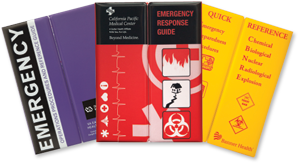Written by: Robin Hattersley
In light of the school shooting that happened at the Covenant School in Nashville, Tennessee today, we’re reposting the following article. It covers many of the recommended practices that schools should adopt to prevent, mitigate, respond to, and recover from active shooter attacks as well as other campus security incidents.
No school security program is infallible, and there are things in our communities, as well as state and federal laws that schools can’t control. The following practices, however, should decrease your school’s chances of a foreseeable tragedy happening on campus, including a school shooting.
The recommendations are:
- Improve access control and, if possible, build a secure vestibule that funnels all visitors through one entrance. (IMPORTANT: When bolstering access control, also ensure first responders, such as law enforcement and fire, are still able to access campus during a lockdown. Do they have keys, access cards, or some other way they can quickly enter a classroom, office, or any area on campus experiencing a security or safety issue? This will help them more effectively respond to situations, such as a barricaded suspect, fire, etc.)
- Deploy metal detectors at sporting events, concerts, political speeches, etc. Consider randomly using weapons detection technology on K-12 campuses during school hours.
- Install locks on classroom doors that lock from the inside. Be sure to follow all applicable codes and laws, such as the Americans with Disabilities Act (ADA), National Fire Protection Association (NFPA) codes, etc.
- Consider installing window security film in appropriate areas, being careful not to hinder building evacuation during emergencies.
- Hire a qualified and experienced security contractor/systems integrator that understands and follows all codes and regulations to install all security, public safety, and life safety systems and equipment.
- Train students, faculty, staff, and clinicians how to properly identify and respond to active shooters and other campus emergencies.
- Regularly conduct drills and exercises that address a wide variety of hazards and incidents, not just active shooters.
- Install visitor management systems that screen guests.
- Have teachers and staff members carry panic buttons.
- Install or update emergency communication and notification equipment
- Create a multi-disciplinary threat assessment and threat management team.
- Partner with local first responders so they can effectively and quickly respond to a campus emergency. This should happen long before an incident happens.
- Hire school resource officers (SROs) or campus police officers, provide them with appropriate training, and then arm them.
- Adopt Crime Prevention Through Environmental Design (CPTED) concepts.
- Train faculty, staff, administrators, and public safety officers on verbal de-escalation techniques.
- Deploy security cameras that campus police and/or local law enforcement can tap into during an incident. The evidence provided by video surveillance systems is also extremely useful during investigations of incidents.
- Conduct background checks on all teachers, staff, volunteers, and vendors.
- Have on staff enough school psychologists, social workers, and counselors so individuals exhibiting concerning behavior get the help they need before they resort to violence against themselves, against others, or both.
- Develop emergency plans and keep them current.
- Develop and maintain relationships with students, faculty, staff, clinicians, nurses, and others in the community so they feel comfortable reporting the concerning behavior of others.
- Adopt anonymous tip phone lines and text messaging services.
- Have the ability to effectively and quickly reunite students with their parents or legal guardians.
- After an incident, provide long-term mental health services to students, staff members, and faculty.
- Develop policies and procedures to support all of the solutions you’ve adopted and then regularly train and re-train all campus personnel on how to implement and follow them.
This list is in no way complete or perfect. Like all of you, we at Campus Safety are constantly looking for new and better ways to make campuses safer. That said, it’s a good start for novices to campus security. It also serves as an important reminder to school security veterans.
Additionally, here are some specific resources that might be helpful:
Lessons Learned from Other School Active Shooter Attacks
- 10 Key Findings from the U.S. Secret Service’s Targeted Violence Report
- Highlights from the Final Report of the Federal Commission on School Safety
- Stoneman Douglas Safety Commission Releases 407-Page Report
- Arapaho Shooting Report Highlights Flaws in District’s Threat Assessment Process
- 7 Lessons Learned from the Sandy hook School Shooting
- 12 Lessons to Remember From Active Shooter Attacks
Threat Assessment/Management
- Using Situational Awareness to Identify Pre-Attack Indicators
- Social Media Monitoring: Beneficial or Big Brother
- Countering Potential Campus Threats with Social Media Monitoring
- Enhancing Campus Safety with a Threat Assessment Program
- School Threat Assessments: Avoid These 3 Mistakes When Developing Your Process
- Video Q&A: Threat Assessment and Threat Management in Schools
- Adjusting Your Student Supervision Practices to Address New Threats
- Reading Between the Lines: Recognizing Insider References to School Shooters
- 6 Reasons Why the New Title IX Rules Make K-12 Threat Assessment Teams a Must-Have
- FERPA and HIPAA: When Can You Share Student Education and Health Records
- Conducting School Threat Assessments: 4 Tips from a Psychologist
Weapons Detection
- 18 Tips for Using Metal Detectors Effectively
- 7 Signs a Weapon Is Being Concealed
- 12 Tips for Cracking Down on Weapons Assaults
Campus Visitor Management
- 15 Considerations When Buying an Electronic Visitor Management System
- Managing School, University and Hospital Visitors
- Campus Security Begins at the Perimeter
Student, Staff Member, Police Officer Mental Health
- Providing Multi-Tiered Mental Health Support After a School Tragedy
- Signs a Student May Be Struggling with Their Mental Health and How to Help
- Helpful Mental Health Resources for Campuses
- Student and Teacher Mental Health: Is It Just Stress or Something More?
- Behavioral Health Director Speaks to the State of Mental Health in K-12 Schools
- Leveraging Data to Reveal Student Mental Health Trends
- Taking a Community-Based Approach to Campus Mental Health
- Compassion Fatigue: Your Job Is to Help Others, but Who Is Helping You?
Access Control
- Helpful Access Control and Lockdown Hints from Security Pros
- 8 Ways to Improve School Entrance Security
- Access Control: How to Select the Right Technology for Your Campus
General
- A Building Risk Assessment Checklist From the NFPA
- 20 Active Shooter and Active Killer Prevention Strategies
- 11 Factors to Consider When Selecting Security Technology for Your Campus
- Finding the Right Security Systems Integrator for Your Organization
- Choosing the Right Integrator for Your Next Campus Security Project
- Report: 10 Essential Actions to Improve School Safety
- 4 Security Basics Your K-12 Campus Should Implement Now
- 5 Layers of School Security
This post came from Campus Safety News and is shared with consent: https://www.campussafetymagazine.com/news/school-shooting-prevention-response-mitigation-recovery-resources/







